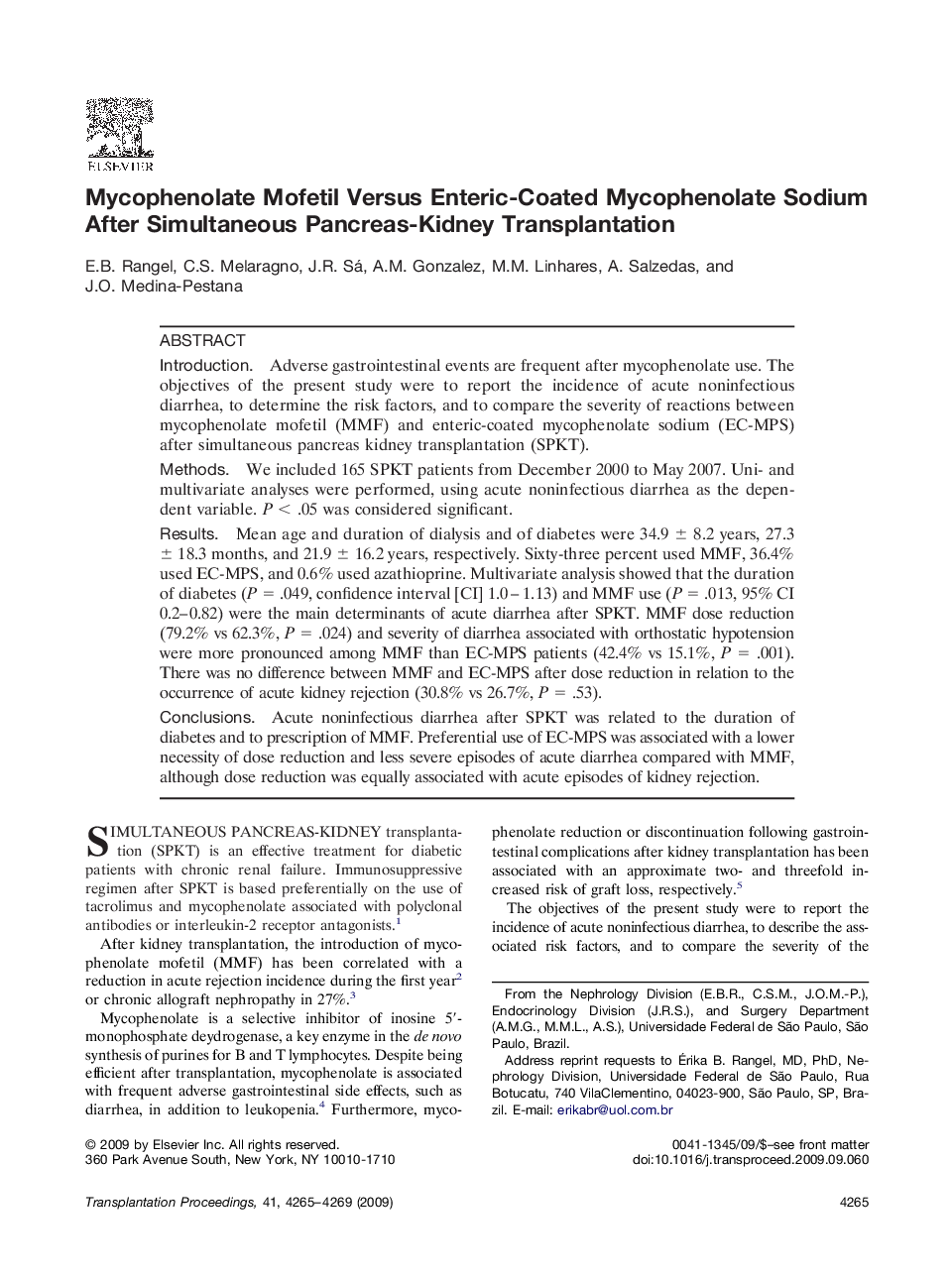| Article ID | Journal | Published Year | Pages | File Type |
|---|---|---|---|---|
| 4258501 | Transplantation Proceedings | 2009 | 5 Pages |
IntroductionAdverse gastrointestinal events are frequent after mycophenolate use. The objectives of the present study were to report the incidence of acute noninfectious diarrhea, to determine the risk factors, and to compare the severity of reactions between mycophenolate mofetil (MMF) and enteric-coated mycophenolate sodium (EC-MPS) after simultaneous pancreas kidney transplantation (SPKT).MethodsWe included 165 SPKT patients from December 2000 to May 2007. Uni- and multivariate analyses were performed, using acute noninfectious diarrhea as the dependent variable. P < .05 was considered significant.ResultsMean age and duration of dialysis and of diabetes were 34.9 ± 8.2 years, 27.3 ± 18.3 months, and 21.9 ± 16.2 years, respectively. Sixty-three percent used MMF, 36.4% used EC-MPS, and 0.6% used azathioprine. Multivariate analysis showed that the duration of diabetes (P = .049, confidence interval [CI] 1.0– 1.13) and MMF use (P = .013, 95% CI 0.2–0.82) were the main determinants of acute diarrhea after SPKT. MMF dose reduction (79.2% vs 62.3%, P = .024) and severity of diarrhea associated with orthostatic hypotension were more pronounced among MMF than EC-MPS patients (42.4% vs 15.1%, P = .001). There was no difference between MMF and EC-MPS after dose reduction in relation to the occurrence of acute kidney rejection (30.8% vs 26.7%, P = .53).ConclusionsAcute noninfectious diarrhea after SPKT was related to the duration of diabetes and to prescription of MMF. Preferential use of EC-MPS was associated with a lower necessity of dose reduction and less severe episodes of acute diarrhea compared with MMF, although dose reduction was equally associated with acute episodes of kidney rejection.
